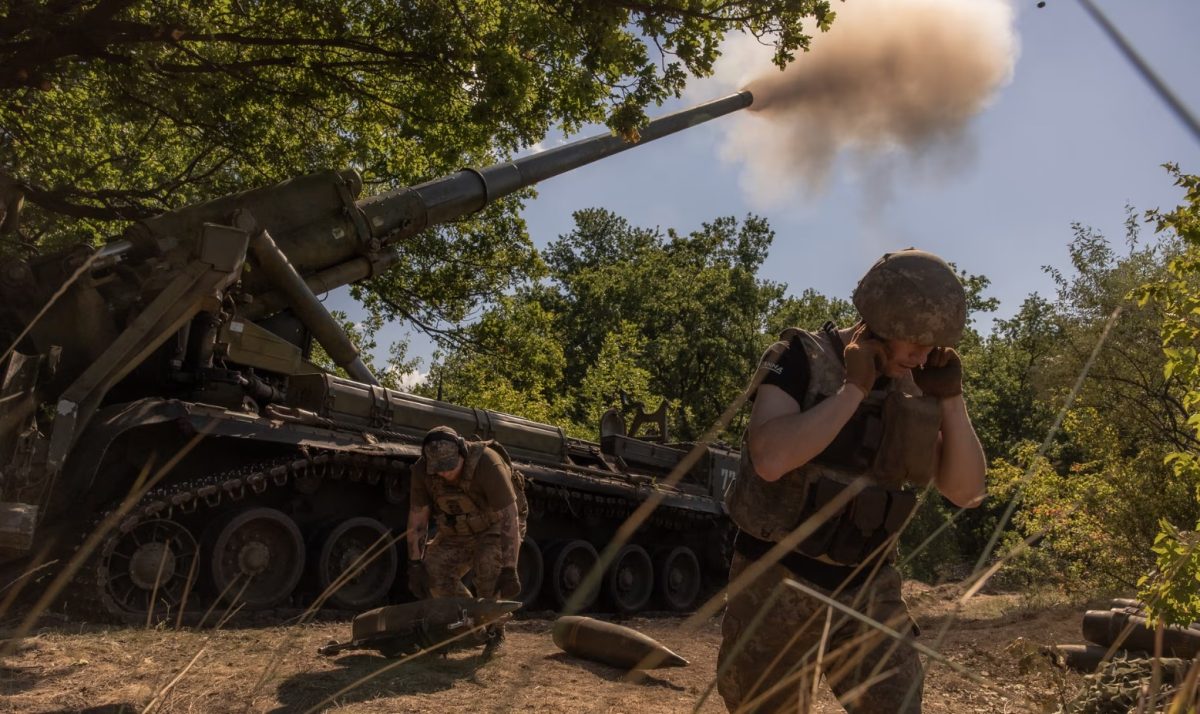“We need to inflict significant tactical defeats on Russia,” the Ukrainian presidential adviser Mykhailo Podolyak wrote on the Telegram messaging app.
“In the Kursk region, we clearly see how the military tool is objectively used to convince the Russian Federation to enter into a fair negotiation process.”
“We have proven, effective means of coercion. In addition to economic and diplomatic ones … we need to inflict significant tactical defeats on Russia,” he added.
Podolyak made his comments as it appeared that Ukraine had largely cut off a significant area of Glushovsky district of Kursk and Russian troops there after blowing up two important bridges on the Seim river.
As Ukraine appeared to be consolidating its gains in Russia’s Kursk region, Moscow’s forces were advancing rapidly towards Pokrovsk, which for months has been one of their key targets.
Ukrainian military authorities urged civilians living in the city to speed up their evacuation on Friday. Pokrovsk officials stated in a Telegram post that Russian troops were “advancing at a fast pace. With every passing day there is less and less time to collect personal belongings and leave for safer regions”.
Pokrovsk is one of Ukraine’s main defensive strongholds and a key logistics hub in the eastern Donetsk region. Its capture would compromise Ukraine’s defensive abilities and supply routes and bring Russia closer than ever to its stated aim of capturing the whole region.
In an update on Thursday, the Institute for the Study of War thinktank wrote: “Russian troops are maintaining their relatively high offensive tempo in Donetsk oblast, demonstrating that the Russian military command continues to prioritise advances in eastern Ukraine even as Ukraine is pressuring Russian forces within Kursk oblast.”
Russia has accused NATO and the west more widely of aiding the Ukrainian incursion, including by permitting the use of western-supplied equipment.
The US so far has deemed the incursion a protective move in which it is appropriate for Kyiv to use US equipment, officials in Washington said. But they expressed worries about complications as Ukrainian troops pushed further into enemy territory.
One US official, speaking on condition of anonymity, told Reuters that if Ukraine started taking Russian villages and other non-military targets using US weapons and vehicles, it could be seen as stretching the limits Washington has imposed, precisely to avoid any perception of a direct NATO-Russia conflict.
Ukraine has announced that one of the aims of its current incursion into Russia is to counter artillery and missile fire into Ukraine and create a buffer zone.
Footage posted on Russian social media has purported to show western-supplied equipment – including a British-supplied Challenger 2 main battle tank – destroyed or captured during the Kursk offensive, although the tank depicted in the footage appears to be a Soviet-era T-64. Unverified reports have said that Challengers may have been used during the operation.
Russia’s defence ministry has also published footage that it said showed a Russian drone destroying a US-made Stryker armoured combat vehicle in Kursk.
On Friday, Russian forces stated they had destroyed a Ukrainian reconnaissance and sabotage unit in Kursk that was armed with weapons from NATO countries, the state-run media agency RIA reported, citing unidentified security sources.
“Samples of small arms manufactured by the United States and Sweden have been seized at the liquidation site of a Ukrainian sabotage group near the village of Kremyanoe in the Kursk region,” RIA cited a Russian security official as saying.
Ukraine’s attack into Russia began on 6 August, when thousands of Ukrainian troops crossed Russia’s western border, in an embarrassment for the Russian military.
The unprecedented operation hit its 10-day mark on Aug. 15, with Kyiv claiming to have seized 1,150 square kilometers of Russian territory and 82 settlements, including the town of Sudzha.
The US and other western powers, eager to avoid direct confrontation with Russia, noted Ukraine had not given advance notice and that Washington was not involved.
So far Russia has mostly redeployed irregular units in its sluggish response.
Footage geolocated by the ISW placed Ukrainian troops just under 30km (18.6 miles) from the international border in Kursk. Although the Russian defence ministry claimed it had cleared some settlements of Ukrainian forces, Russian military bloggers suggested fighting was continuing.
On Thursday a number of Ukrainian news outlets identified several units of more than 100 recently captured Russian prisoners of war, suggesting a mix of regular and irregular forces, including Chechen fighters.
Fighting also appeared to be continuing at a border crossing into the Belgorod region – a second line of Kyiv’s advance – with conflicting reports over the status of the fighting.
While the Ukrainian attack has revealed weaknesses in Russia’s defences and changed the public narrative of the conflict, Russian officials said what they cast as a Ukrainian “terrorist invasion” would not change the course of the war. Russia has been advancing for most of the year in the key eastern sector of the 1,000km (620 mile) frontline and has vast numerical superiority.
Kremlin aide Nikolai Patrushev stated NATO and the west were directly involved in the planning for Ukraine’s attack on the Kursk region.
“The operation in the Kursk region was also planned with the participation of NATO and Western special services,” Patrushev told the Izvestia newspaper.
